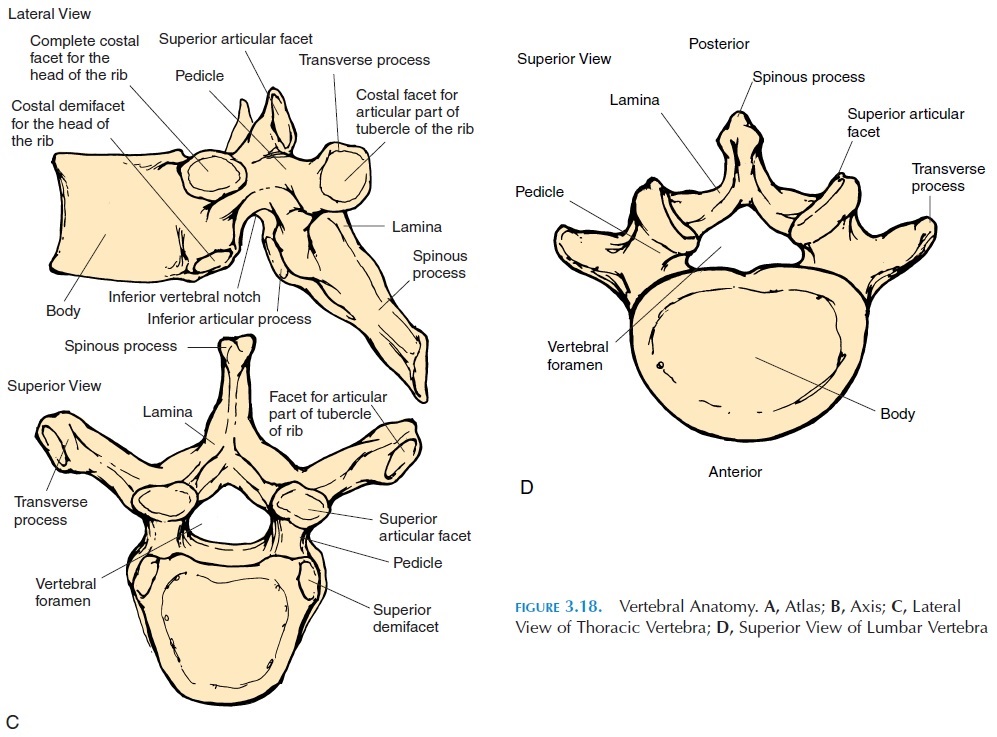Chapter: The Massage Connection ANATOMY AND PHYSIOLOGY : Skeletal System and Joints
Characteristics of Vertebrae in Different Regions - Vertebral Column

Characteristics of Vertebraein Different Regions
The characteristics of the vertebrae in different regions vary according to major function. For example, the cervical vertebrae have a large vertebral foramen because all the nerves ascending and descending from the brain form the spinal cord here. As the lower regions are approached, the vertebral foramen become smaller. This is because of the exit of spinal nerves according to the region they supply. As the spinal cord descends, more and more nerves leave; hence, the tapering appearance of the spinal cord. The cervical vertebrae are also smaller as they only must bear the weight of the head. The vertebrae in the other regions become sturdier, the lumbar being the largest (Figure 3.18D) because they have to bear more weight. The thoracic vertebrae have extra facets on the transverse processes and the body that articu-late with the ribs (Figure 3.18C). The transverse processes of the cervical vertebrae have a foramen (transverse foramen), through which the vertebral artery, vein, and nerve pass. The spinous processes of the cervical vertebrae C2–C6 are often bifid.


The first cervical vertebra is the atlas (Figure 3.18A) as it bears the weight of the head. It articulates with the occipital condyles of the skull. This joint—the atlanto-occipital joint—permits the nodding of the head. The atlas does not have a body and spinous process, instead it has anterior and posterior arches and a thick, lateral mass. The second vertebra is called the axis (Figure 3.18B). It has a projection (dens, or odontoid process) that projects superiorly from theregion of the body of the vertebra. This process is held in place against the inner surface of the atlas by a transverse ligament. This joint allows the head to ro-tate and pivot on the neck. The dens is actually the fu-sion of the body of the atlas with that of the axis.
Because the position of the head on the cervical vertebrae resembles a bowl being balanced on a small rod, contraction of small muscles attached to the base of the head can initiate marked changes in head posi-tion. However, these muscles, being weak, cannot fully support the head if it is jolted violently, as in a car crash. Such a jolt can result in dislocation of the cervical vertebrae and injury to the spinal cord, liga-ments, and muscles of the neck. The movement of the head in this situation resembles the lashing of a whip; hence, the name whiplash for this kind of injury.

Related Topics